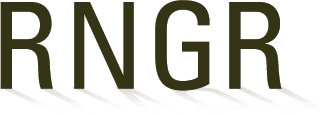Hydrophyllaceae (Phacelia)
Phacelia (hastata)
Hydrophyllaceae
Waterleaf
Phacelia
hastata
Silverleaf phacelia
PHHA
See
Southern British Columbia and Alberta to California, and east Colorado and western Nebraska; foothills, valleys, and plains.
seeds
seed
Propagules (seeds, cuttings, poles, etc.)
0
Harvest yields vary due to weather and age of stand. Average annual production is 61 kg/ha (54 lb/ac).
Wildland collection occurs late July to late September when the creamy white to lavender-colored flower turns tan and the seed is dark brown and hard; the bristly coiled cyme is unpleasant to hand-harvest.
One collection hour/person will yield an average 33 grams (1.2 oz) clean seed and varies by year, stand density, and collector experience.
Seed Processing: Seed is spread out on a tarp in a dry, sheltered environment and turned daily for approximately 3-5 days, until no moisture or warmth is detected. Seed is threshed with a hammermill through a 4/64" round hole screen, air-screen processed on and Office Clipper of a 1-18" round hole screen with low wind. Due to small seed, persistence of floral capsules, and fair seed flow, this species is moderately easy to clean. Larger seed lots are processed most efficiently with mechanized cleaning equipment and smaller seed lots usually require more hand labor. Seeds/Kg: 992,000. Purity: 100%.
Seed Treatments: None required.
Propagation Environment: Seedbed is firm and free of weeds with good field moisture to 4" depth. Seed Propagation Method: Direct seeding.
Sowing Date: Early spring. Sowing/Planting Technique: 25-30 pure live seed/ft (0.3 m) row, irrigated 91 cm (36 in) row spacing, seeded with 2-row double-disk planter with depth bands, optimum seeding depth 0.6 cm (0.25 in). Establishment Phase: Soil sufrace is kept moist throughout the 14 day germination and emergence period (also helps prevent soil crusting). Fertilizer application is not recommended the first year, as it generally stimulates weed growth and competition.
2 growing seasons.
Rapid Growth Phase: Spring to fall; soil moisture is critical during budding stage, after anthesis, and post harvest to pre-freezeup - no irrigation is applied during flowering (pollination); fertilizer is broadcast at 100 lbs actual N/40 lbs actual P/acre in mid-September.
2 to 3 growing seasons.
N/A.
Harvest Date: Cultivated harvest occurs late July to early August, with a mean harvest date of August 1 at the Bridger Plant Materials Center. Hand-harvesting is required because the seedheads are low to the ground. Seed Storage: Seed is placed is cloth or plastic seed sacks and stored in a cool, dry environment. Seed Dormancy: Classified as physiological dormancy.
<b>Storage Duration:</b> 5 to 7 years.
Ecotype: 1 Yellowstone National Park accession periodically collected and produced from 1992 to 1996. Grassland ecological zone is big sagebrush/Idaho fescue habitat. Elevation is 2,357 m (7,733 ft).
Flora of the Pacific Northwest, C.L. Hitchcock and A. Cronquist, University of Washington Press, 1973.
Yellowstone Vegetation - Consequences of Environment and History in a Natural Setting, Don G. Despain, Roberts Rinehart Publishers, 1990.
Seeds: Ecology, Biogeography, and Evolution of Dormancy and Germination, C.C. Baskin and J.M. Baskin, Academic Press, 2001.
Winslow, Susan R.. 2002. Propagation protocol for production of Propagules (seeds, cuttings, poles, etc.) Phacelia hastata seeds USDA NRCS - Bridger Plant Materials Center Bridger, Montana. In: Native Plant Network. URL: https://NativePlantNetwork.org (accessed 2025/06/01). US Department of Agriculture, Forest Service, National Center for Reforestation, Nurseries, and Genetic Resources.





